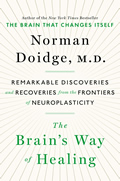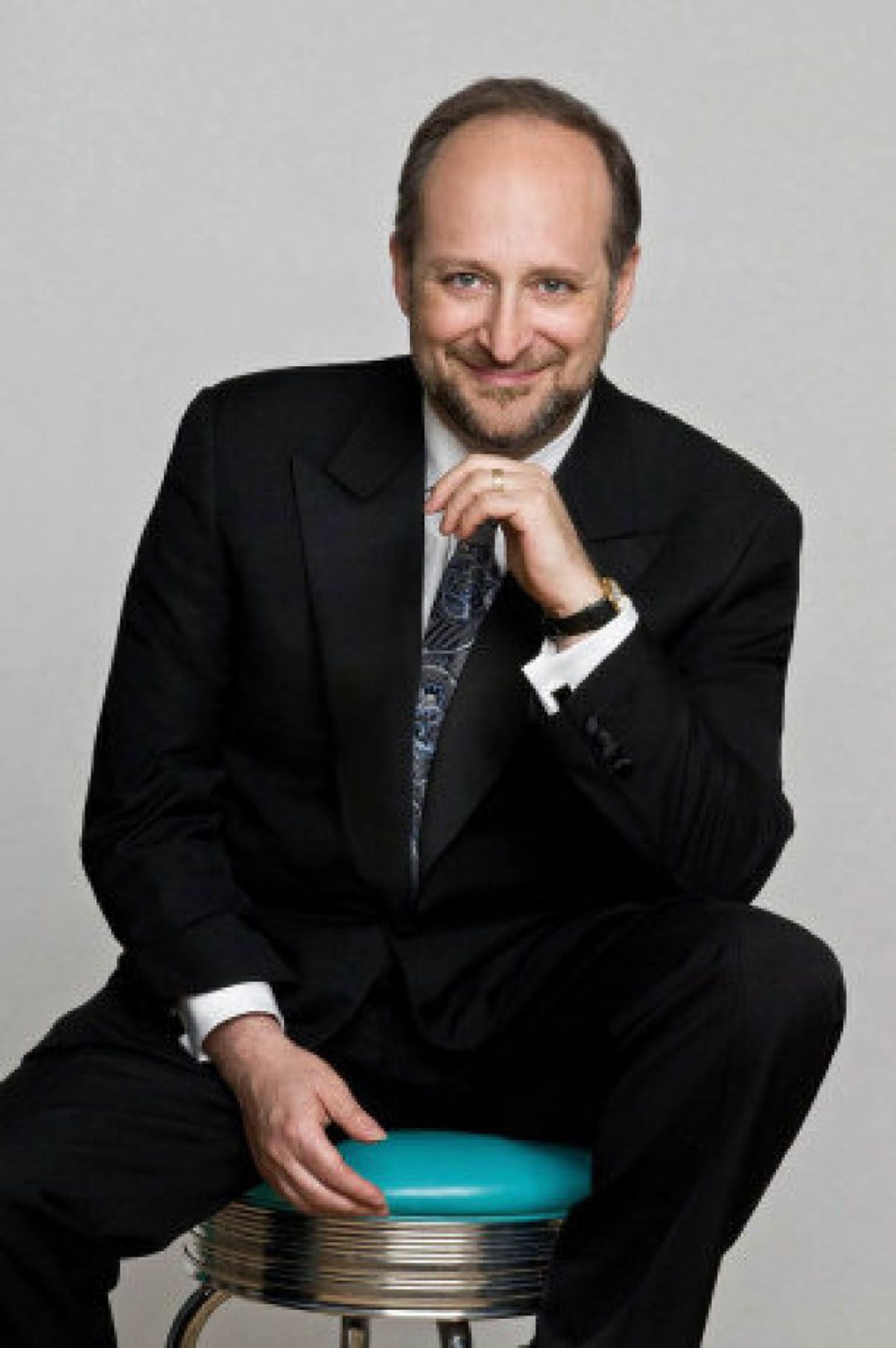U of T psychiatry prof Norman Doidge has been writing and studying the mind for more than 20 years. In his new book, excerpted below, he shows how patients can harness the brain’s ability to change its own structure and function in response to mental experience — the phenomenon of neuroplasticity — to heal.
First he noticed it was becoming hard to sing, a nightmare because that was how he made his living and singing was who he was. Then he could barely sing at all but could still speak his lines. And then over a couple of years he began to lose his speaking voice, until it became wispy thin and trailed off, so that he could generate only short, barely audible bursts of whispered air.
“It was agonizing to watch him lose his beautiful singing voice, heartbreaking. I fell in love with that voice,” said Patsy Husmann, his wife of 50 years. Ron Husmann was a singer of first rank on Broadway, on television, and in film, and throughout the 1960s and 1970s his deep baritone was everywhere. He sang in Camelot opposite Robert Goulet. He co-starred in The Gershwin Years with Frank Sinatra, Ethel Merman and Maurice Chevalier. He starred on Broadway in Tenderloin, and worked with the leading ladies Debbie Reynolds, Julie London, Bernadette Peters and Juliet Prowse in more than half a dozen other Broadway shows. He toured as the lead in Irma La Douce, Show Boat, South Pacific, and Oklahoma! Singing live, in a theatre that held 3,000 people, Ron could be heard by everyone without using a microphone, while the rest of the cast required one.
The bass register begins to mature in richness only in a singer’s thirties, and completely fills out in his forties. Ron was at his peak at 44 when, as he whispered, “it stopped dead.”
As with many people who are eventually diagnosed with multiple sclerosis (MS), it took doctors a number of years — nine, in his case — to realize that his lost voice and a complicated package of other symptoms were caused by MS. In MS, one’s immune system, instead of attacking invading organisms as it should, turns against the brain and spinal cord and attacks the fatty sheath around the long projections of the nerves. This sheath, called myelin, functions as insulation and can increase the speed of the conduction of a nerve signal 15 to 300 times.
Because antibodies can attack myelin almost anywhere in the brain or spinal cord, each patient gets a different version of MS, and each person’s symptoms unfold in a different way. Ron’s deep voice was stripped of its beauty in a series of onslaughts. First the middle tones began to disappear; then suddenly he didn’t have the low notes, for which he was most famous. He went to all the “voice people” who serve performing artists. Onstage, directors had to mike him up so he could be heard, until there was nothing much left to amplify. By the time his singing career was ruined, he was able to hit only about eight notes around middle C.
As the muscles of his legs and arms wasted away, he needed to walk with a cane; then he needed two canes, the kind that go all the way up the arm; then he sometimes had to use an electric cart and gained 50 lb. from lack of exercise. Next he began to have trouble with balance. Standing with his eyes closed, he couldn’t keep himself erect. He had trouble swallowing — always a terrifying symptom. He was increasingly choking on his food because the brain stem, which coordinates the rhythmic contractions of the throat muscles, was no longer working properly. His worst symptom was his unrelenting exhaustion. He got to the point where he could only whisper into the phone for perhaps a minute, until his voice broke up so badly that he imagined he would have to stop trying to whisper altogether.
By coincidence, perhaps, a friend of Ron’s from high school also developed MS and voice problems. Now a retired professor living in Madison, Wisconsin, the friend told Ron that a laboratory there, at the University of Wisconsin, had invented a strange device that you put in your mouth to help MS symptoms. The inventors were using the device to treat a range of MS symptoms, not only voice problems. Though it didn’t cure MS, if it was used regularly, it “reset” the brain, so it fired clearer signals and vastly improved its functioning. The lab had a strange name, the Tactile Communication and Neurorehabilitation Laboratory, and it was run by three men: Yuri Danilov, a Russian neuroscientist (and former Soviet soldier); Mitch Tyler, an American biomedical engineer (formerly of the U.S. Navy); and Kurt Kaczmarek, an electrical engineer.
The founder of the lab, Dr. Paul Bach‑y‑Rita, had recruited them. Bach‑y‑Rita, who had recently died, was a legendary figure, one of the first advocates of using brain plasticity in healing. A physician who worked as a neuroscientist, he was the first of his generation to argue that the brain is plastic from cradle to grave, and he used that understanding to develop devices that facilitated positive plastic change. Devices that he developed helped blind people see and helped restore balance lost after brain damage; they also included computer games for stroke patients to train their brains to restore lost functions.
When Ron arrived at the lab, he saw a small, modestly equipped room in an old building. It had a loading dock at its entrance, the hallway was under construction, and as one patient said, it “did not look like the home for scientific miracles.” Ron’s attitude was “This may work, this may not. What have I got to lose?” The team reviewed his medical records and did tests and recordings to determine his ability to walk and balance. They took him to the university’s voice assessment department and recorded his speech, which was incomprehensible, broken up, and appeared as little dots on the monitor. When the baseline testing was complete, they took out the device he had heard about.
It was small, fitting into a shirt pocket. It had a cloth strap attached, and some of the scientists in the lab wore it hanging around their necks, like a pendant. The part that went into the mouth and rested on the tongue looked like a wide stick of chewing gum. This flat part had 144 electrodes on its underside, which fired off electric pulses, in triplets, at frequencies designed to turn on as many of the tongue’s sensory neurons as possible, by generating a pattern of stimulation that roved across the underside of the device. This flat part was attached to a tiny electronics box, about the size of a matchbox, which sat outside the mouth and had some switches and lights on it. Yuri, Mitch, and Kurt called it the PoNS, named, tongue‑in‑cheek, for a part of the brain stem called the pons, one of the device’s main targets. The acronym PoNS stands for Portable Neuromodulation Stimulator, because when it stimulates the neuroplastic brain, it modifies and corrects how the neurons are firing.
The team asked Ron to put the device in his mouth, while he stood as straight as he could. It painlessly stimulated his tongue and its sensory receptors with waves of gentle signals. Sometimes the stimulation tingled, and sometimes it became barely noticeable, and when it did, the team would adjust the dial, turning it up. After a while, they asked him to close his eyes.
After two 20-minute sessions, Ron was able to hum a tune. After four, he was able to sing again. At the end of the week, he was belting out Old Man River.
What was most remarkable was that Ron’s improvement, after almost 30 years of steadily worsening symptoms, was so rapid. He still had MS, but now his brain circuits were functioning so much better. He stayed at the lab for two weeks, working Mondays through Fridays, practising with the device in his mouth, resting, and practising again. He did six sessions a day during the first week — four in the lab, two at home. Electronic voice testing showed huge improvement, a steady stream of sound. His other MS symptoms started to improve. The day he left, the man who had come in wobbling on a cane tap-danced for the team.
I spoke with Ron two months after he returned home to Los Angeles. He had brought the device home to practise with and reinforce his gains. Now that he had his voice back, he was gushing words — at times I had to ask him to talk more slowly, so I could get it all down.
“You can imagine if you haven’t sung for 28 years, what it’s like suddenly to sing again. The fact that I could carry a tune, and hook one note to another, after four 20-minute sessions, was astounding and emotional — more than emotional — I broke down. They told me to hum and vocalize while the thing was in my mouth. I gradually realized my voice was getting stronger. The next day Yuri said, ‘You don’t need that cane.’ That day I got rid of it. By the third day, I was able to stand without any support, and with my eyes closed. By the time I left, I could sing two octaves. I was a bass baritone, and I had a low E that I could sing in public, and when I did Annie Get Your Gun, I got up to an F sharp. And . . . I can be loud now! I was so loud in their lab, they had to put their fingers in their ears. And now when we walk our dog every night, I walk so fast my wife can hardly keep up with me.”
Then he said to me, “Do you realize that we have been talking for a full hour?”

“I wasn’t expecting you to sound younger than I do,” I said finally. “Your voice sounds like that of a man decades younger.”
He took a moment to think. “Well, maybe it should,” he laughed. “I haven’t used it for 30 years.”
Norman Doidge (BA 1978 UC, MD 1983) is a professor of psychiatry at U of T. This is an excerpt from his book The Brain’s Way of Healing. Copyright © 2015 by Norman Doidge. Reprinted by permission of Penguin Random House. All rights reserved.






No Responses to “ How a Singer Got His Voice Back ”
This is amazing! I fell in love with Ron Husmann when I was a teeny-bopper, after seeing/hearing him in a performance at the San Bernardino Civic Light Opera. It must have been a horrifying experience for him to have lost his voice. Now that he has it back, do you know if he makes appearances anywhere? Thank you so much for helping him!
I met Ron at a civic theater in Rockford, Illinois, in 1967. I wonder how he would feel about some recognition by his home town.
I was Ron Husmann's house and box office manager when he starred as Dick in the 1970 Hollywood production of Dames at Sea at the Ivar Theater in Los Angeles.